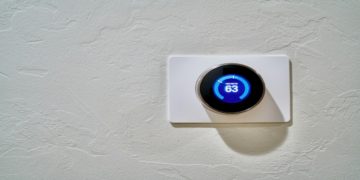Struggling to find reliable trading setups during market open? The Opening Range Breakout (ORB) strategy is a commonly used method by traders to capture price movements early in the day.
This guide will simplify ORB strategies, explain key steps, and help you trade with assurance. Keep reading to excel at this effective technique!
Defining the Opening Range
The opening range indicates the highest and lowest prices at the beginning of a trading session. Traders often use ORB trading strategies to monitor this range and identify potential breakout points early in the market.
Time frames for the opening range
Traders use specific time frames to define the opening range. These time frames help determine precise price levels during the start of a trading session.
- Many traders use the first 15 minutes after the market open as their opening range. This captures early price movement when activity is high.
- The first 30 minutes is another popular option. It provides a broader view and smooths out erratic price fluctuations.
- Some experienced traders prefer only the initial 5 minutes for fast-paced day trading strategies. This suits highly active markets.
- For longer-term trades, using the first hour can be beneficial. It reflects multi-directional moves and reduces noise from impulsive trades.
- Adjusting your preferred time frame depends on your trading goals and market conditions. Smaller ranges fit scalping, while larger ones suit swing trading styles.
Tools for marking the range
Charting platforms assist traders in marking the opening range. Tools such as horizontal lines or drawing tools can indicate the high and low of the price range during the chosen time frame.
Many platforms also offer integrated features to automate this process, saving time.
Candlestick patterns are helpful for identifying key levels. The first few candles after the market opens often establish the initial high and low points. These tools provide a clear visual reference, making it simpler to recognize breakouts during day trading sessions.
Identifying Breakouts
Traders watch for price movements beyond the opening range to identify breakouts. Strong volume often confirms the direction of these moves.
Spotting bullish breakouts
Look for the price moving above the defined opening range with strong volume. A bullish breakout often signals heightened buying interest and momentum, making it a key point of entry.
Refer to candlestick patterns like long green candles or engulfing ones to confirm strength.
Combine technical indicators such as RSI above 50 or moving averages crossing upward to strengthen confirmation. Pay attention to market volatility since higher fluctuations can enhance breakout reliability.
As Jesse Livermore said,.
The big money is not in the buying and selling, but in the waiting.
Spotting bearish breakouts
Bearish breakouts occur when the price falls below the defined support level of the opening range. Traders identify this by watching for a strong downward candle that closes below the range’s low.
A high trading volume during this move confirms selling pressure and strengthens bearish momentum.
Using candlestick patterns like engulfing or shooting stars helps detect potential drop signals before the breakout occurs. Combining these patterns with technical indicators such as RSI or MACD can validate weak market conditions further, enhancing reliability.
Key Components of ORB Strategies
Successful ORB strategies rely on clear entry and exit rules. Traders must plan for unexpected market movements to protect their positions.
Stop-loss and risk management
Set a stop-loss just below the low of the opening range for bullish trades or above the high for bearish trades. This approach helps minimize losses if the breakout fails to sustain its movement.
Establish your risk level per trade, typically around 1-2% of your trading capital. Adjust position size accordingly to maintain controlled exposure during fluctuating market conditions.
Setting profit targets
Set profit objectives based on the size of the opening range. For example, if the range is 10 points, consider aiming for a 1:1 or 2:1 risk-to-reward ratio depending on market conditions.
Use critical levels such as resistance zones for bullish breakouts or support areas for bearish movements to establish practical goals.
Trailing stops can assist in securing gains during periods of high volatility. Modify targets based on momentum or use technical indicators like moving averages for confirmation. Always plan exits ahead of initiating trades to prevent emotional decision-making.
Enhancing ORB Accuracy
Use additional tools to confirm breakout strength. Analyze price movements for clearer trade signals.
Using technical indicators
Technical indicators can enhance the accuracy of Opening Range Breakout strategies. Moving averages assist in identifying trends by smoothing out price data. Traders often rely on 20-day or 50-day moving averages to confirm breakout direction.
The Relative Strength Index (RSI) assesses momentum and overbought or oversold conditions. An RSI above 70 may indicate a weak bullish breakout, while one below 30 could suggest strong bearish movement.
Combine these tools with patterns to validate trades before setting profit targets or stop-loss levels.
Integrating volatility filters
Adding volatility filters
Volatility filters help traders avoid false breakouts during low market activity. By focusing on stocks or assets with greater price movement, these filters enhance the reliability of trading signals.
For example, a trader might set a minimum Average True Range (ATR) threshold to ensure sufficient volatility before entering trades.
Including volatility metrics lowers unnecessary risks in breakout trading. Traders can also monitor pre-market gaps or significant news events that often lead to increased price fluctuations.
Greater volatility raises the likelihood of strong directional moves after breaking the initial range.
Confirming momentum
Traders verify momentum by examining price movement and trading volume during a breakout. A strong bullish breakout typically displays rising volume as prices surpass the opening range high.
Observing candlestick patterns assists in confirming momentum. Long-bodied candles with minimal wicks suggest a strong directional tendency. For bearish breakouts, monitor consistent selling activity with above-average trade volume below the opening range low.
Managing Risk and Optimizing Trades
Control your position size to protect your capital. Adjust strategies to reduce exposure during uncertain trades.
Position-sizing best practices
Position sizing is critical for managing risk and maximizing gains. It helps traders protect their capital during day trading and breakout strategies.
- Calculate your risk per trade. Never risk more than 1-2% of your total account on a single trade.
- Base position size on the distance to your stop-loss. Larger stop-loss distances require smaller positions to manage risk properly.
- Use the opening range high or low as reference points. This can help you determine where to place your stop-loss effectively.
- Adjust position sizes according to volatility. Increased market volatility may require smaller trades to limit potential losses.
- Align position size with overall portfolio goals. Ensure that each trade fits within your broader trading strategy and objectives.
- Avoid taking on excessive risk in volatile markets. Refrain from committing too much, which could damage your account during sudden swings.
- Apply technical analysis tools for accuracy in entry and exit levels. Tools like candlestick patterns or support and resistance aid in making more informed decisions for sizing trades.
- Test different approaches using demo accounts first. Experimenting without real money allows you to refine calculations without financial loss risks.
- Keep emotions out of position sizing decisions entirely. Emotional trading often leads to poor choices that harm long-term performance.
- Monitor results after every session closely for sizing errors or adjustments needed in future trades based on outcomes achieved daily across all sessions tracked correctly over time consistently!
Avoiding false breakouts
False breakouts can weaken your trading strategy and lead to unnecessary losses. Traders should focus on recognizing key signs to avoid these traps.
- Monitor trading volume during a breakout. A realistic breakout usually occurs with significant trading volume, indicating strong market interest.
- Study candlestick patterns near the range. Weak or indecisive candles, like doji, may signal hesitation and an unreliable move.
- Confirm breakout direction using technical indicators. Tools like RSI or MACD can assist in validating momentum before entry.
- Avoid trading in low-volatility conditions. Small price ranges during the opening session often lack conviction for strong breakouts.
- Set notifications at key price levels before entering trades. Notifications can help confirm that the price sustains movement beyond the range.
- Be cautious of news events affecting market open trades. Sudden data releases or announcements can create temporary volatility, causing false signals.
- Use time-based confirmation for breakouts. Allow some time past the initial breakout to avoid premature entries into weak trades.
- Place stop-loss orders at logical points below support or above resistance zones. This limits risks if the trade reverses unexpectedly.
- Avoid taking oversized positions in a volatile market open period. Smaller sizes reduce risks when false moves hit stop-loss levels.
- Review failed trades regularly to identify patterns leading to false breakouts in your trading strategy consistently over time.
Adapting ORB Strategies to Market Conditions
Different markets demand flexible approaches to ORB strategies. Adjust time frames and tactics to match changing market behaviors.
Different time frames and market environments
Traders can modify Opening Range Breakout (ORB) strategies to suit various time frames. For day trading, the first 15 or 30 minutes of market open is often used to establish the range.
Swing traders may opt for a longer initial range, such as the first hour or even the entire morning session.
Market conditions significantly influence ORB effectiveness. High-volatility markets often provide clearer breakouts, enhancing profit opportunities. In low-volatility scenarios, false breakouts occur more frequently and demand careful attention.
Altering position size and stop-loss levels based on market trends can help manage risk more effectively in shifting conditions.
Comparing ORB to other key price levels
Opening Range Breakout focuses on an initial price range during the market open. Unlike static levels like the previous day’s high or low, ORB adjusts to current session volatility.
This flexible nature helps traders identify fresh momentum and directional bias early in the trading session.
Key price levels such as support and resistance provide fixed points for analysis, while ORB emphasizes real-time breakout opportunities. Combining both methods can enhance entry signals by aligning breakouts with technical analysis of major price zones.
Strong execution requires comparing these tools within your strategy to identify higher-probability setups effectively.
Explore adapting ORB strategies for different markets next.
FAQs About ORB Strategies
Traders often ask about the best time frames for ORB strategies. Understanding common mistakes can help improve your trading outcomes.
Best time frames for ORB strategies
The first 15-30 minutes after the market opens often serve as the most favorable time frames for ORB strategies. During this period, price fluctuations are typically significant, and price movements outline the opening range.
Many day traders concentrate on this window to identify breakouts above or below critical levels.
Shorter time frames like 5-minute or 15-minute charts are commonly used by experienced traders applying breakout trading setups. These intervals offer faster signals for entry points while detecting momentum changes early in the session.
Longer time frames, such as 30 minutes, can help minimize noise but may delay entries in rapidly changing markets.
Common mistakes and how to avoid them
Traders often pursue breakouts without confirming momentum. This can lead to entering trades based on misleading signals. Apply technical indicators, like RSI or moving averages, to confirm the strength of a breakout before making a commitment.
Many neglect setting appropriate stop-loss levels and risk excessive capital per trade. Always determine your maximum loss before entering a position. Adhere to position-sizing rules relative to your account size for improved risk management.
Conclusion
Mastering Opening Range Breakout strategies can help traders improve their decision-making. By focusing on breakouts and managing risk, you can identify strong opportunities in the market.
Use technical tools and adapt your approach as conditions change. Practice regularly to refine your skills and build confidence in trading.












































































